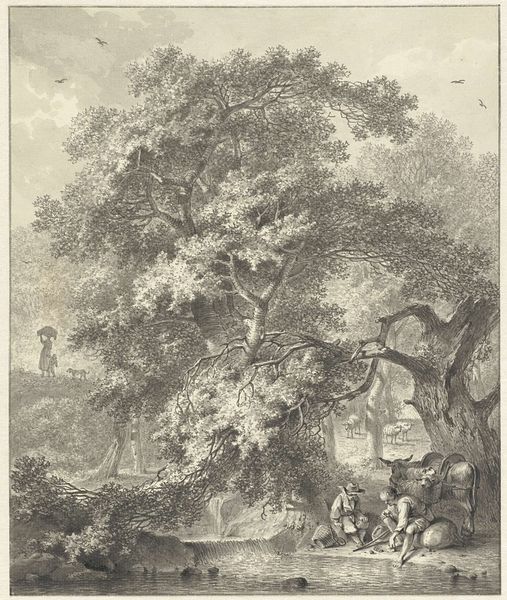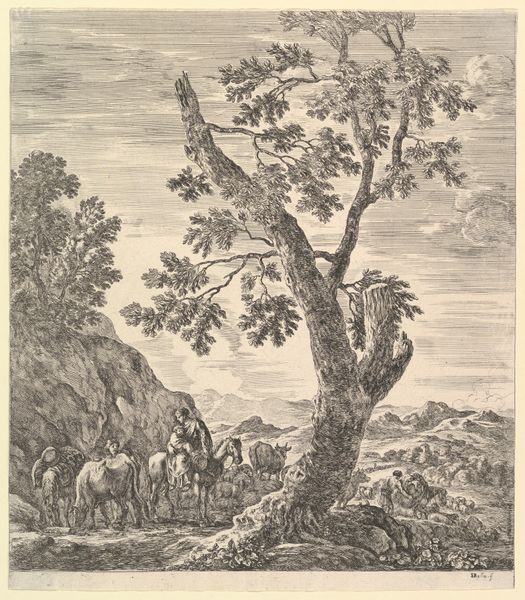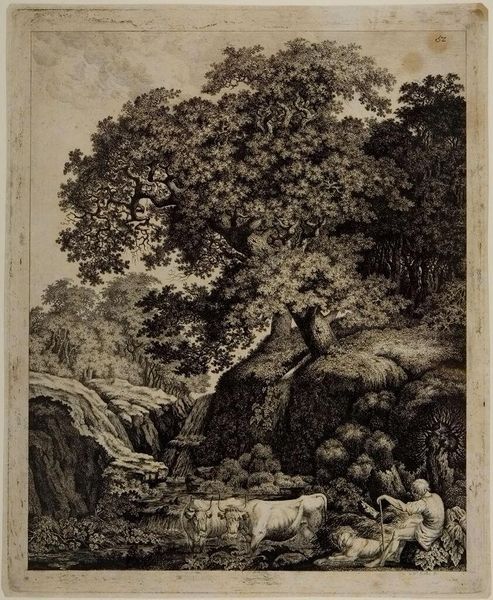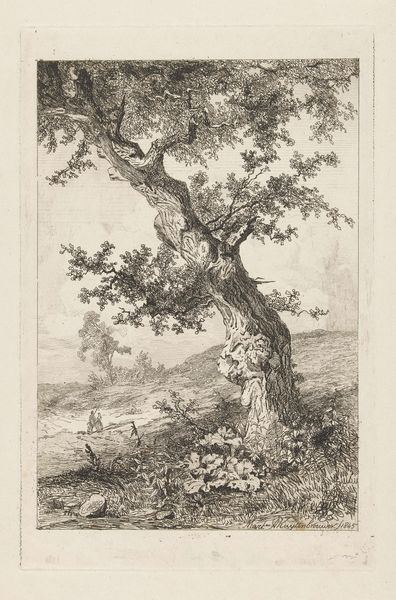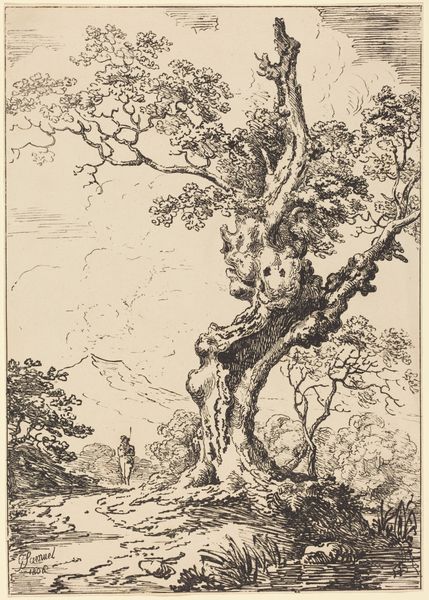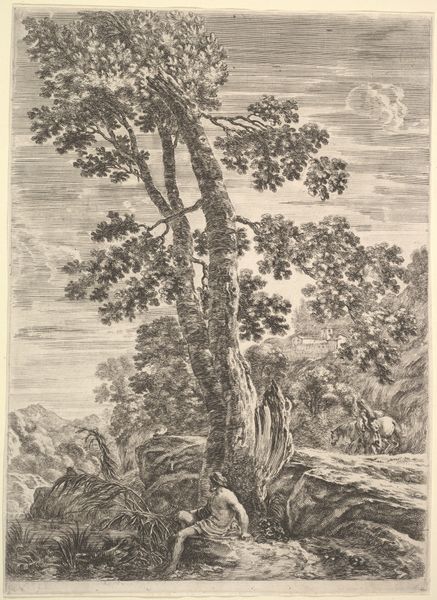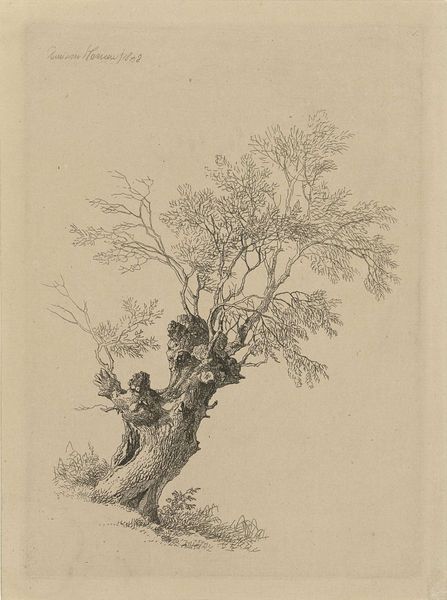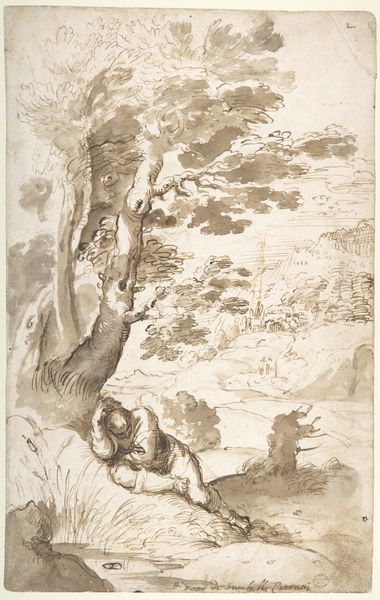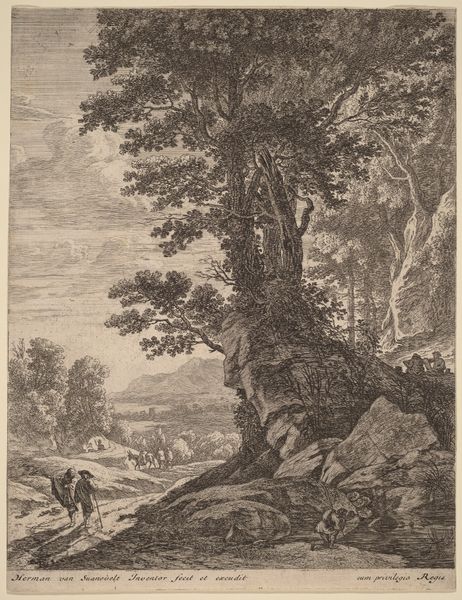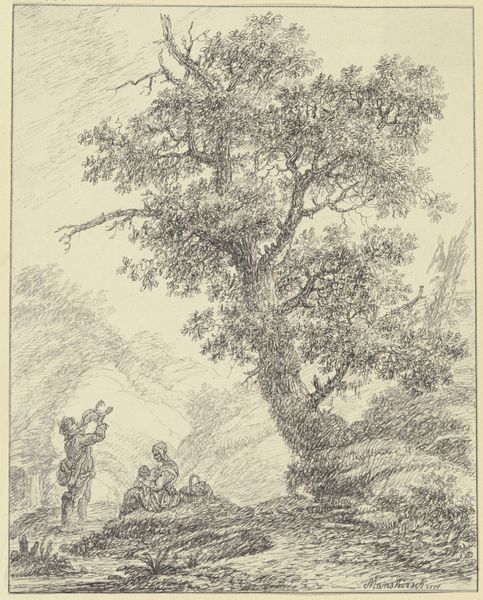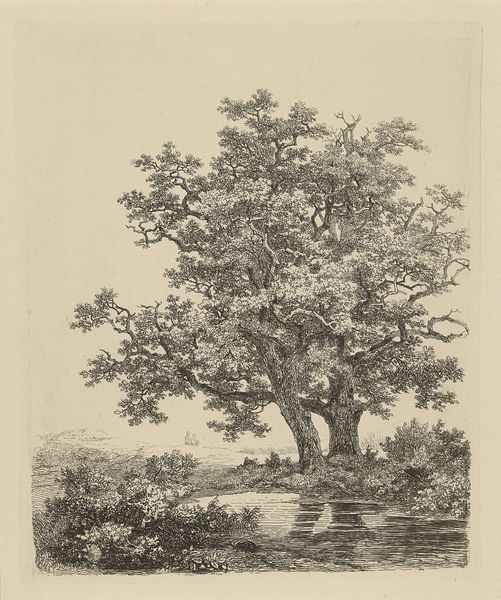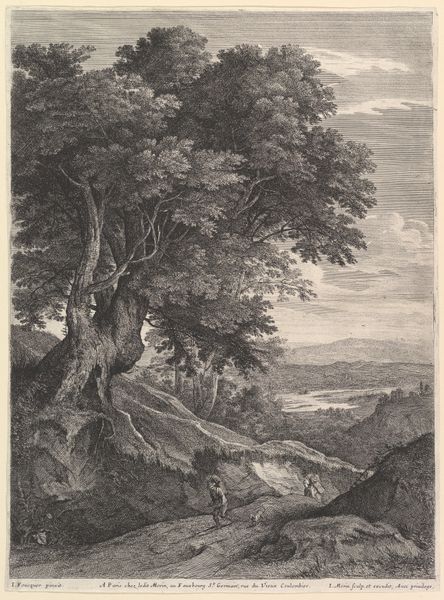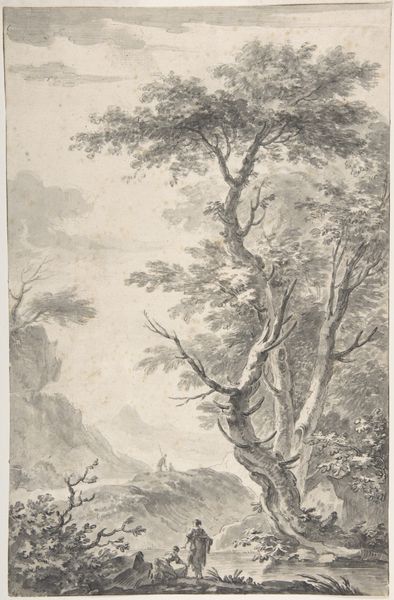
drawing, lithograph, print, paper
#
drawing
#
lithograph
# print
#
landscape
#
paper
#
romanticism
#
france
#
history-painting
Dimensions: 440 × 321 mm (image); 519 × 354 mm (sheet)
Copyright: Public Domain
Editor: Antoine Pierre Mongin's "Artist in a Rocky Landscape," created in 1816, strikes me as a scene of quiet observation rendered in lithograph on paper. It's incredibly detailed. What strikes you most when you look at this piece? Curator: I see a careful consideration of materials and process. The lithograph, a relatively new technology at the time, allowed for a democratization of image-making. How does this reproducible print engage with traditional ideas of landscape painting and its elite patronage? Editor: That’s a great point, I hadn’t thought about the lithograph process itself as a conscious choice. So, you are suggesting that by using lithography, Mongin democratizes not only the art but also access to landscape imagery? Curator: Precisely. We need to think about how lithography changed artistic production, particularly in terms of labor. Consider the labour involved. The artist no longer needs to rely on wealthy patrons for distribution of this landscape, with lithography, it could be accessed by wider social classes through mass production. Doesn't this alter the role of the artist in society? Editor: Definitely! So it's not just a pretty picture, but also a statement about art’s role and accessibility in 19th-century France. That emphasis on the ‘means’ is fascinating. Curator: Yes, the image and its creation are deeply entwined. The landscape and how we perceive it were being reshaped by new technologies and the shifts in economic power. Consider, the ruggedness, the detail in the tree foliage..the materials evoke both the labor and romantic vision of nature in one artwork! Editor: It's interesting to view a seemingly straightforward landscape through a materialist lens, revealing its connections to broader social and technological changes. Curator: Indeed. By examining the artwork's production and reception, we can unlock a deeper understanding of its cultural significance.
Comments
No comments
Be the first to comment and join the conversation on the ultimate creative platform.
